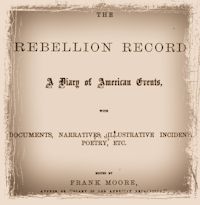June 5.—Contrabands in the vicinity of Suffolk, Va., having signified their intention of serving the United States as armed soldiers, orders were issued by Major-General Peck to Captain John Wilder, “to recruit a company of colored troops, subject to no molestation in removing those so recruited to the place of rendezvous, at Craney Island.”—A Squadron of the Sixth New-York Cavalry, commanded by Major William P. Hall, on an expedition from Yorktown, Va., to Warwick River, succeeded in destroying twenty-three boats and one schooner belonging to the rebels.—Brigadier-general Alexander P. Stewart, of the rebel army, having been promoted to the rank of Major-General, took leave of his brigade, and assumed command in the corps of General Hardee, at Wartrace, Tenn. -—Chattanooga Rebel, June 7.
—The steamer Isaac Smith, which was captured by the rebels on the first of February last, was sunk while trying to run the blockade of Charleston, S. C., by the national gunboat Wissahickon.—The rebel privateer Alabama, in latitude 14° S., longitude 34° W., captured and destroyed the ship Talisman.—The Second division of the Sixth army corps, under the command of General A. P. Howe, crossed the Rappahannock River at Deep Run, on a rcconnoissance. During the passage of the river, the rebel sharp-shooters made some opposition, and after the division had crossed there was some brisk skirmishing, the rebel rifle-pits were carried, and over thirty prisoners captured. The National casualties were six killed and thirty-five wounded, among the former Captain Charles E. Cross, of the engineers.—(Doc. 5.)



